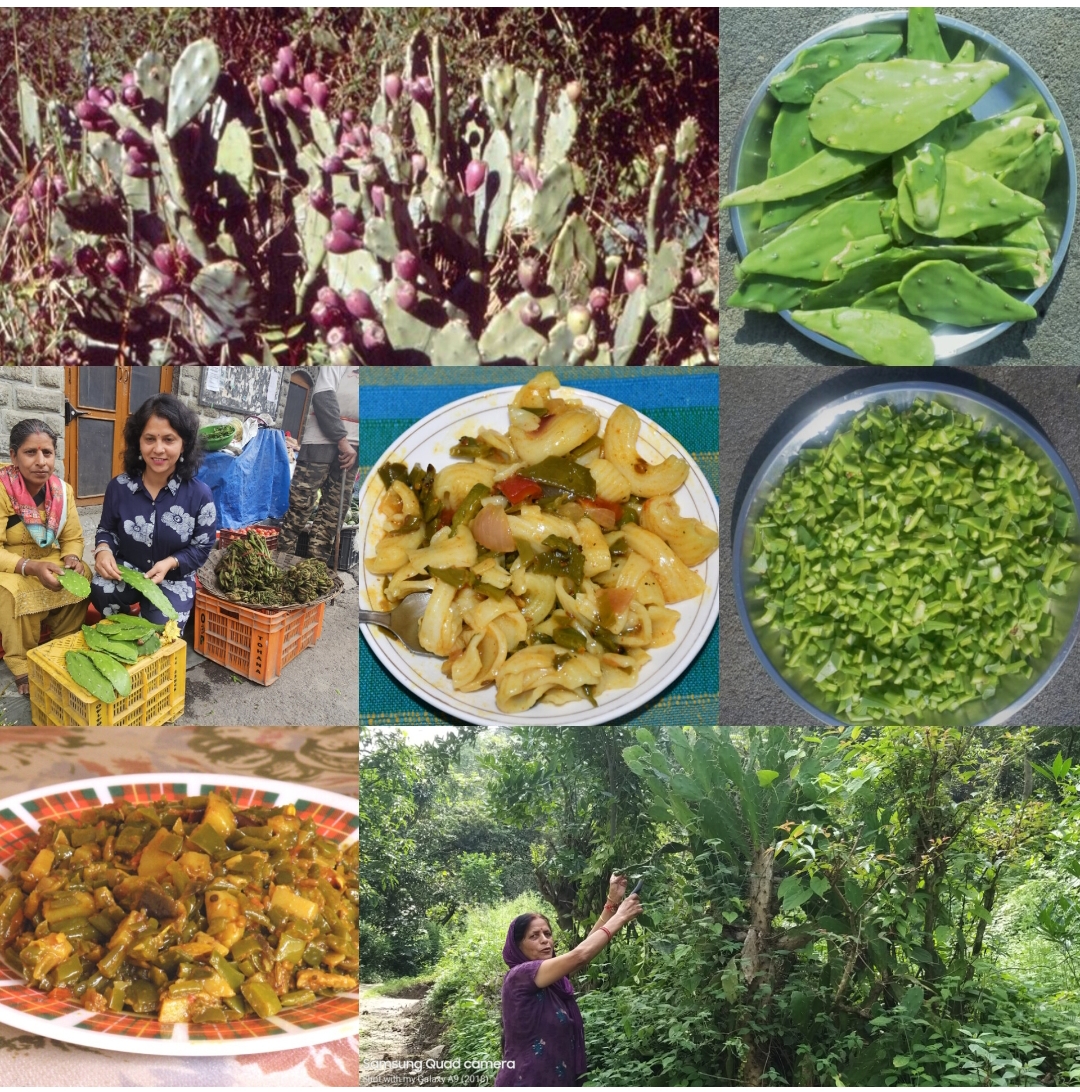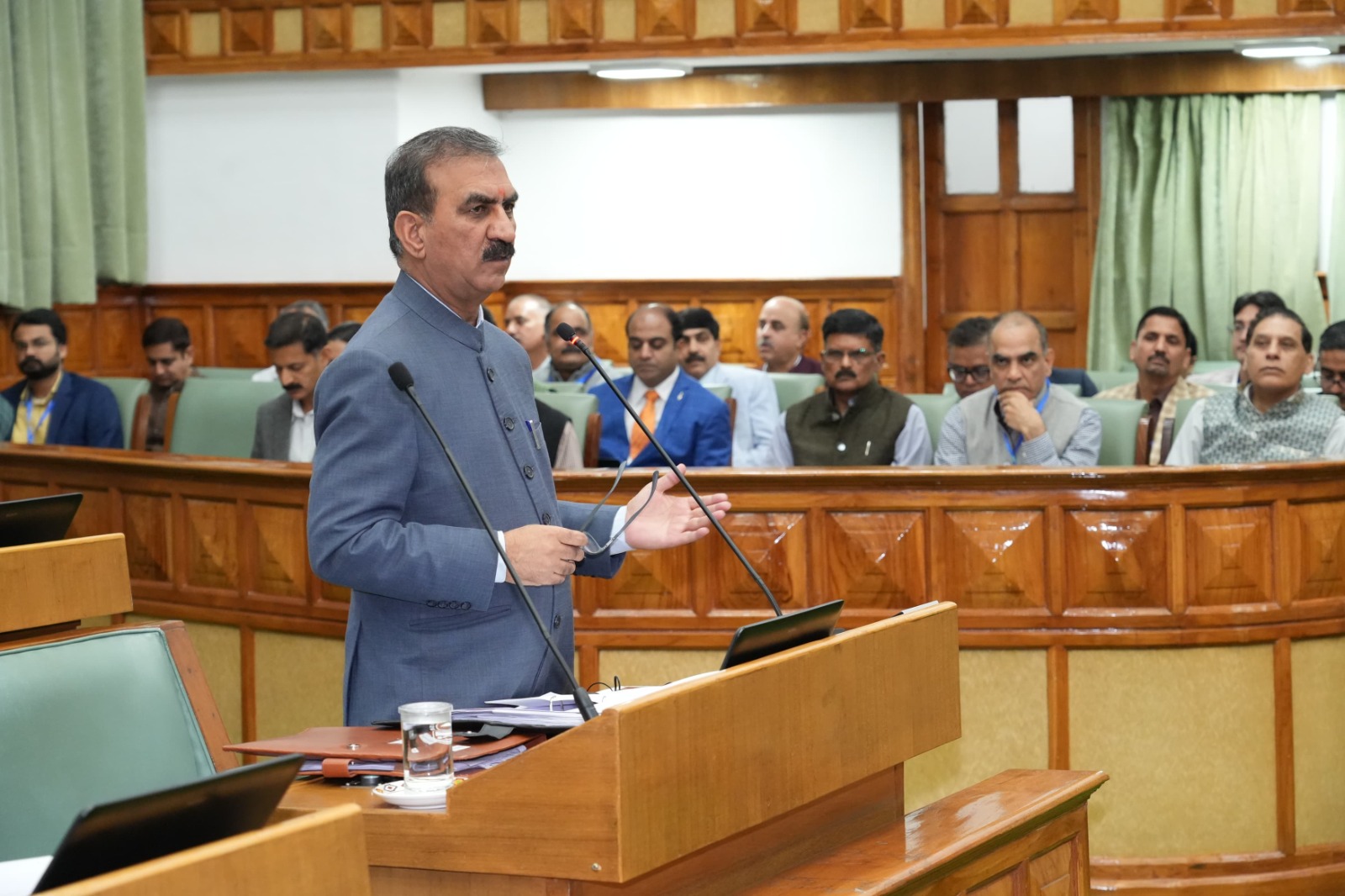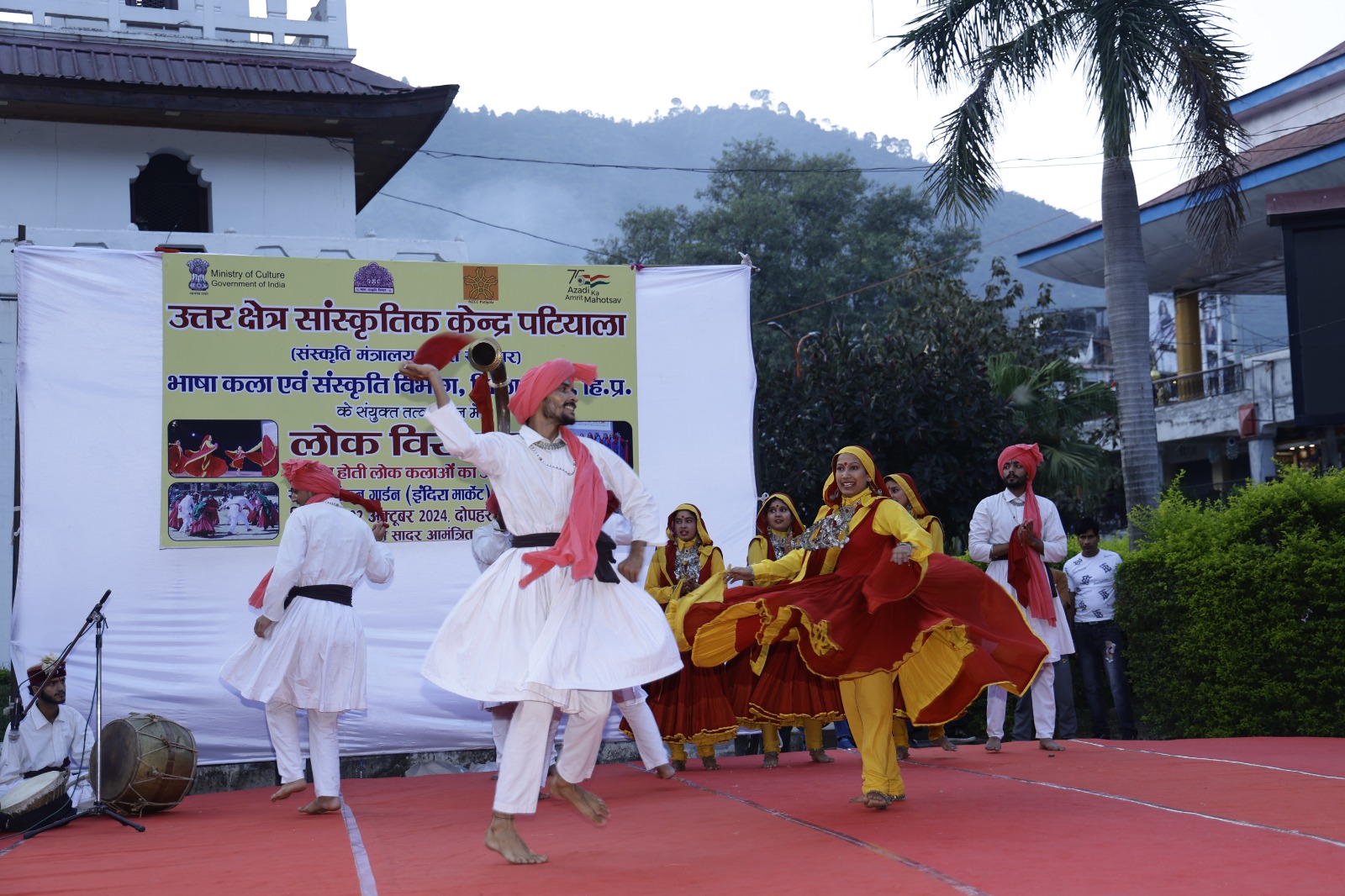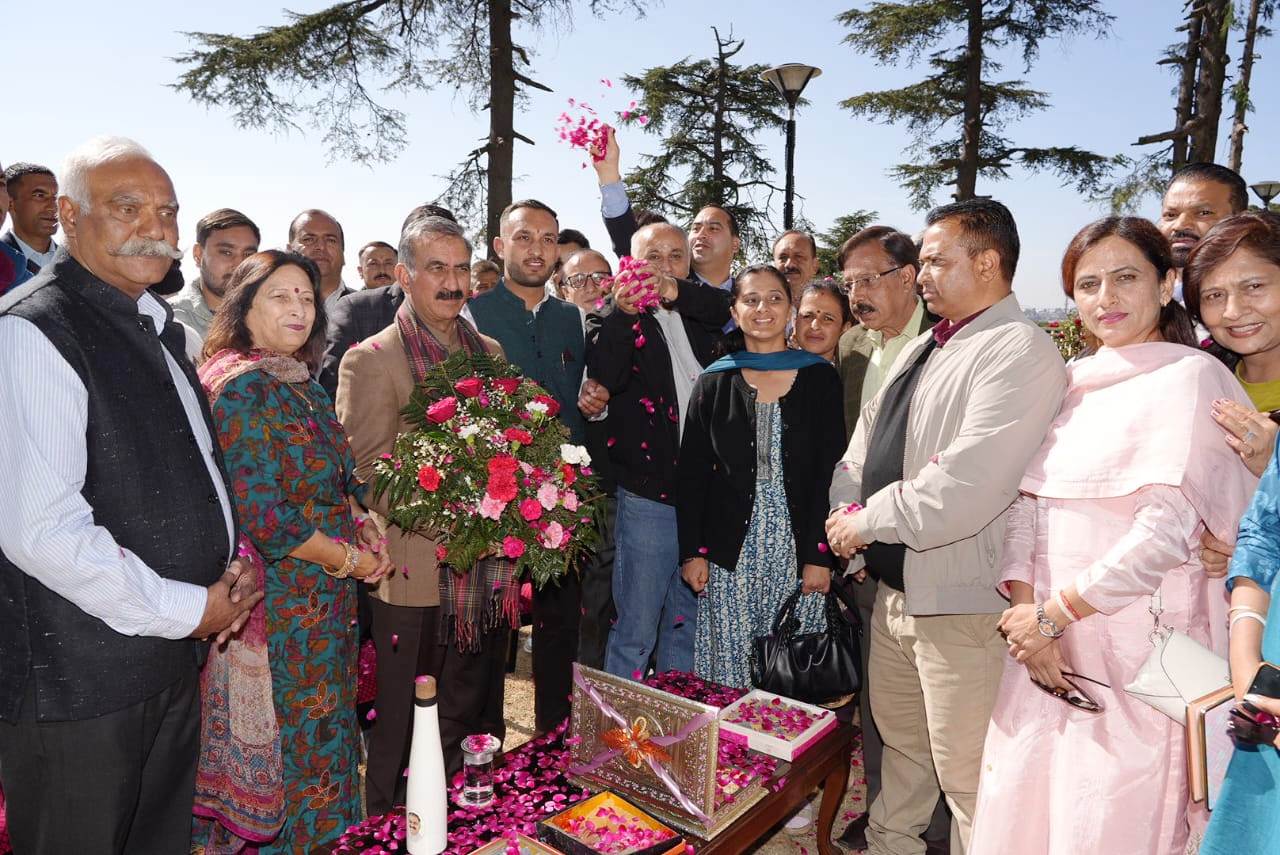Nagphani: A Prickly Path to Health and Sustainability.
Shimla:
In the rugged terrains and sun-drenched slopes of India’s arid and semi-arid zones, grows a plant often overlooked, dismissed as just another thorny cactus—*Opuntia*, commonly known as Nagphani or Prickly Pear and locally it is known as drabhad chhoonh or kabuli chhoonh in Himachal Pradesh.Yet, beneath its spiny exterior lies a nutritional and medicinal marvel waiting to be rediscovered.
The Forgotten Edible Treasure
Long used in Mexican and Mediterranean cuisines, *Opuntia* is slowly gaining recognition in India for its edible pads (cladodes) and fruits. The tender pads, when harvested young and handled carefully to remove spines, can be sautéed, stir-fried, pickled, or added to sabzis. They possess a mild, slightly tangy taste and a texture similar to okra, making them an excellent choice for traditional Indian preparations. The vibrant reddish-purple fruits, called *tunas*, are rich in natural sweetness and can be eaten raw, juiced, or turned into jams, syrups and squashes.
Interestingly, in many rural areas, especially near the lower Himalayan foothills, the fruits are traditionally harvested by children during their play. With great joy and natural instinct, they rub the thorny fruits on rocks to remove the spines before enjoying the juicy pulp. In sacred places like Jwalaji, ripe Opuntia fruits are even offered for sale by local vendors. For economically weaker communities, young pads of Opuntia once served as an important seasonal vegetable and continue to be cooked by those who remember its value.
Two species—Opuntia dellini and Opuntia ficus-indica—are commonly found growing from the lower altitudes to mid-hill regions of India and are both edible. Notably, Opuntia ficus-indica has less prominent spines and is therefore more frequently employed for cooking and juice extraction. In some regions, its ripe fruit is even used in preparing local alcoholic beverages, offering a unique blend of nutrition and traditional fermentation practices.
A Natural Pharmacy in the Wild
Rich in flavonoids, betalains, and polyphenols, both the pads and fruit Nagfani shows diverse pharmacological activities such as: antioxidant, anti-inflammatory, anti-tumour, neuroprotective etc. It is effective to cure urinary complaints, tumours, loss of consciousness, piles, inflammations, anaemia, ulcers and the enlargement of the spleen. The roots of Nagfani are very bitter. These are used to induce quick vomiting in case of persons bitten by poisonous snakes. The medicinal potential of Opuntia has long been revered in traditional systems. Its mucilaginous pads are known to soothe stomach ailments and are used in folk remedies for ulcers and gastritis. Traditionally, it has been used to:
Control blood sugar levels in diabetics by reducing postprandial glucose spikes
Lower cholesterol and triglyceride levels
Support liver health and detoxification
Alleviate hangover symptoms through its antioxidant action
Promote weight loss by inducing satiety and improving gut health
Moreover, its wound-healing properties are well documented in folk medicine, where crushed pads are applied to cuts and burns.
Harvesting the Right Way
Harvesting Opuntia demands care, patience, and knowledge. As spines on the plant might pierce into fingers. So, a special care has to be taken during harvesting and removal of spines. Removing spines from pads is a little bit tricky and time-consuming process. This is the only challenge in today’s fast life, impeding this useful food plant to be listed in high rating wild food plants. Early morning is ideal, as the spines are less brittle and the pads are firm. Using long tongs and gloves, only young, green pads of 6–8 weeks are plucked for consumption. The surface spines (glochids) are singed over a flame or scraped with a knife before cooking.
The bristles present on fruits can be removed by rubbing the fruits on stone or with some wet piece of thick cloth. Spines can also be burned in fire, it is comparably easy than earlier methods but makes pads faded
For the fruit, harvesting is traditionally an intuitive, skillful activity passed down generations. As seen with children rubbing fruits on rocks or vendors prepping them for sale, *Opuntia* harvesting blends traditional knowledge with hands-on practice. The ripe fruits are identified by their deep red or purple hue. Glochids are removed using a cloth or flame before consumption.
A Powerhouse of Nutrition.
Nagfani pads and fruits are rich source of fibers, fats, ash, acidic, ascorbic acid, total phenolics, saccharose, glucose, fructose and minerals like Na, Ca, Mg, Mn K, Fe, Zn, and Ni. Young pads of Opuntia are a wonderful addition to pasta, pulao, dalia, sandwiches, or even pizza—adding a nutritious twist and unique flavor. You can also use them to prepare refreshing detox water for a healthy lifestyle.
A Sustainable Choice for the Future
Besides its edible and medicinal benefits, Opuntia stands tall as a beacon of sustainability. It thrives on marginal land, requires minimal water, and acts as a carbon sink. It also prevents soil erosion and is a promising fodder during droughts. In countries like Ethiopia, Mexico, and Tunisia, Opuntia cultivation has transformed drylands into productive zones.
The Way Forward
As India battles rising non-communicable diseases and climate challenges, promoting underutilized plants like Opuntia is the need of the hour. Farmers can be trained to cultivate and harvest it safely. Self-help groups can be encouraged to process it into high-value health products—syrups, powders, jams, and herbal teas. Tender pads could one day be sold in local mandis like any other green vegetable, if only we shift our gaze to this wild, untapped resource.
Amid the hustle of local markets, Meena Devi—a spirited local seller—is playing a pivotal role in reviving this long-forgotten superfood. It is heartening to witness the growing interest among consumers, who are now appreciating its nutritional richness and culinary versatility. Meena sells tender Opuntia pads at ₹60 per kilogram, though she candidly shares that the removal of spines remains a labor-intensive task. Despite this challenge, Opuntia offers a remarkable advantage—it is a hardy perennial that can be harvested throughout the year, unlike most seasonal vegetables. This unique trait makes it a dependable source of income, especially for women and small-scale vendors, adding both economic and ecological value to local livelihoods.
Let us not ignore the humble Nagphani. What appears prickly on the outside may just be nature’s gift for health, resilience, and sustainability.




